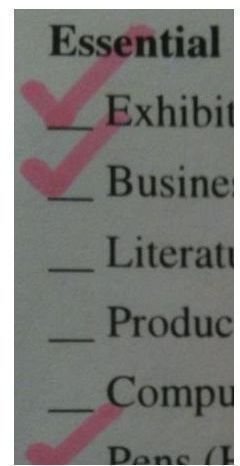How to Approach The Way You Respond to a Request for Proposal
Introduction
Responding to a Request for Proposal (RFP) or Request for Quotation (RFQ) can be a daunting, stressful and in some cases, an intimidating exercise, but keeping your eye on the detail and applying some common sense will actually increase your chances of getting the contract. In this article I bring together some of my experiences to shed some light on how to approach the RFP and produce a solid proposal.
The Devil’s in the Detail
One thing I quickly learned when starting out submitting a proposal to an RFP was that “the devil is in the detail.” Having been on both sides of the counter in regards to not only writing an answer to the RFP but also initiating and managing the RFP, I know that there are details within the RFP that can seem very insignificant to the responder but are of utmost importance to the client. The skill in writing the response is being able to identify the details and then presenting the reply to them appropriately in the document.
Preparation, Preparation and More Preparation!

Before you start putting pen to paper there are a few things that you need to consider:
- First, read the RFP carefully; as I have already said “the devil is in the detail.” Identifying the client’s need “is of paramount importance if the bid writer is going to produce a compelling document”1. The prospective client will quickly disregard your proposal if you can’t even follow their instructions or you have not responded to their specific requirements. If they ask for the proposal document on 6 CDs then make sure you supply 6 CDs. If they do not ask for it in a paper format then don’t send one. You would be surprised how often these simple instructions are ignored.
- Research the company, its products and services and, above all, the people who have requested the proposal. Knowing the person and understanding what and how he or she provides services and products will allow you to put the right slant on your tender.
- Your technical approach and strategy should provide answers to the following questions: who, what, when, where, how, and why.
- Keep notes from any conversation with the potential client.
- If there are opportunities to meet and discuss the RFP with the client then do so. Remember that this is not a time for sales pitches, and the client can get very upset if you try. I was very strict when I ran these sessions, often running a combined session with other potential candidate companies present so all was fair. I also would not reply directly to individual emails but send out a mail shot to all tender candidates with their questions answered for all to see.
- Keep asking yourself, “Can I fulfil the request?” If there are areas that need to be supported by subcontracting then make sure you have the right partners on board to deliver the work to your standards.
- Can you add additional value to the proposal? Giving added value in a response can show to the client that not only do you understand his needs but you have also grasped his business goals. Look at the client’s website for the mission statement and goals to give you clues as to where he wants to be.
- To complement your technical strategy show that you also have a costing strategy.
- Don’t wait until the last-minute to begin gathering cost information that you will need to prepare your budget.
- Set aside enough time to fully prepare the proposal; it always takes much longer than you think. When I first started writing proposals I was surprised how much time is taken in setting the proposal out and ensuring that there is a consistent theme throughout.
- Last but not least, preparation, preparation and more preparation!
Selecting a Winner

Finally think about how the client is going to select the winning proposal and what criteria he will be marking against. The usual way to evaluate a response is using a scorecard system; I use a spreadsheet matrix to score the responses from candidates. When responding to an RFP I write my own set of criteria and tick them off as I progress through a response. The criteria will usually include:
- Does the response demonstrate an understanding of the RFP?
- Does the response sufficiently demonstrate the ability of the candidate to undertake the proposal?
- How has the candidate approached the RFP?
- Is there any value-added benefits to the approach outlined in the proposal?
- What is the price? Are there any hidden costs (support, maintenance, etc.)?
In Summary
At the end of the day, responding to RFPs should be an organized and systematic process. When you start out do not get intimidated by size or complexity of the RFP. Take your time, advance section by section and, above all, remember that “the devil is in the detail.”
References
- 1 William Watson and Associates. Common Errors in Tender Writing, at http://tender-writing.org/common-errors-in-tender-writing/
- Image credits (Winner): http://www.flickr.com/photos/lumaxart/2293239853/
- Image credits (The devil in the detail): http://www.flickr.com/photos/nathanmac87/5073480098/
- Flickr Creative Commons license
- Image credits (Checklist): http://www.flickr.com/photos/xtremexhibits/4360829826/
